 | 1.
The Goal is ZERO | The 70,000 people in Lower Nyakach, Kisumu County, Kenya, have no access to safe drinking water sources and must use heavily contaminated rivers, streams, ponds and shallow wells. THE GOAL IS ZERO is a successful and replicable strategy to eliminate waterborne diseases in Lower Nyakach, implemented by the community based organization, Friends of the Old (FOTO). |
| 2740 Visits
126 Images
Shared Album | |
|
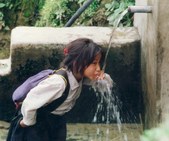 | 2.
Water testing & Pasteurization in Africa | A guide to water testing in developing countries using a Portable Microbiology Laboratory, and how to pasteurize contaminated water using sunshine and a simple solar cooker. |
| 12853 Visits
132 Images
Shared Album | |
|
 | 3.
SODISheatchlorine (July 18, 2011)| Water sources in Lower Nyakach, Kenya, are tested and treated by solar disinfection (SODIS), heat, and chlorine. Will these procedures make the water safe to drink? |
| 1989 Visits
112 Images
Shared Album | |
|
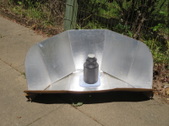 | 4.
Solar water pasteurization | The default recommendation to treat contaminated water is to boil it. However, as microbiologists know from milk pasteurization (161°F, 71°C, for only 15 seconds) boiling is heat far in excess of what is needed. Water will be pasteurized when heated to 149°F (65°C). A reusable, wax-based Water Pasteurization Indicator (WAPI) can verify that water has been pasteurized. Microbiology tests before and after heating verify the disease microbes have been killed. |
| 1591 Visits
21 Images
Shared Album | |
|
 | 5.
watermicrohistory (1987-2005)How solar cooking with a solar box cooker led to the opportunity to bring world-class water testing to communities, leading to an understanding of the relationship between fecal contamination of drinking water sources and waterborne disease. |
| 2306 Visits
129 Images
Shared Album | |
|
 | 6.
How to make a Cookit solar cooker | It's easy to make a Cookit solar cooker from cardboard and 12 feet of aluminum foil. I've included the details of all steps that I use when leading workshops where many Cookits are made. To solar cook, place dark covered pot inside a clear plastic roasting bag. Solar water pasteurization doesn't require a clear plastic bag. Click on the 'start slideshow' above the first photo to view a slideshow. |
| 7595 Visits
38 Images
Shared Album | |
|
 | 7.
seeds for Kenya (January, 2019)| Donors to the International Water and Health Alliances (IWHA) provided $10k in January, 2019, to enable the Friends of the Old (FOTO) project in Lower Nyakach, Kenya, to purchase 2,600 2 kg packages of certified sorghum seed. FOTO consulted with chiefs, assistant chiefs and village elders to select the 200 most needy households in each location and to distribute the seeds to these households. The people have been very happy and are preparing to plant the seeds. The rains have not come yet but most farms are already prepared and waiting for rain. Thanks to generous IWHA donors, the number of households receiving certified seeds in each of the 13 locations has increased from 150 in 2017, 180 in 2018, to 200 in 2019. IWHA’s main project with FOTO is to eliminate waterborne disease despite highly contaminated drinking water sources. See: www.imageevent.com/bobmetcalf/thegoaliszero |
| 741 Visits
15 Images
Shared Album | |
|
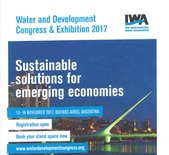 | 8.
WDCE2017 (Nov 13-16, 2017)| International Water Association's Water and Development Congress and Exhibition in Buenos Aires, Argentina. IWHA had a booth to share water testing methods, and Bob and Patrick gave three presentations on IWHA's work. |
| 892 Visits
27 Images
Shared Album | |
|
 | 9.
Delft,Netherlands | Delft, Netherlands. In the 1670s, Delft citizen Anthony van Leeuwenhoek was the first person in history to develop microscopes powerful enough (~400 magnifications)to discover the microbial world for all of humanity. He was the first person to see bacteria, yeast, algae, red blood cells, protozoa. Come to Delft to honor Anthony. |
| 2243 Visits
80 Images
Shared Album | |
|
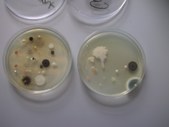 | 10.
Bio 139 Lab Practical #1 | Photos from lab exercises covered on the first lab practical exam |
| 15258 Visits
83 Images
Shared Album | |
|
 | 11.
Bio 139 Lab Practical 2 | Photos from lab exercises covered on the second lab practical exam |
| 33349 Visits
85 Images
Shared Album | |
|
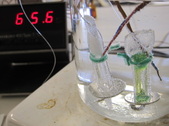 | 12.
WAPI waxes | Testing melting temperature of WAPI waxes |
| 1463 Visits
19 Images
Shared Album | |
|